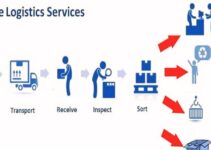Suppliers capacity analysis focuses on analyzing and evaluating the capabilities of suppliers to satisfy the existing and future material and product requirements. It comprises analyzing the reliability, scalability, resources, and production capabilities. While satisfying the production and manufacturing, existing and future demand; it is a complicated task that requires precise foresight and planning. Today, we’ll discuss supplier capacity analysis; its importance, steps involved in the process, benefits, and challenges of supplier capability assessment.
While contracting and engaging with particular suppliers and vendors, it is significant for the company to evaluate its capabilities to satisfy the company’s demands and requirements. The capability analysis evaluates the following factors;
- Production and manufacturing capabilities
- Availability of resources
- Delivering the required supplies and products on time
- Helping the company to make informed decisions while choosing the suppliers
- Decreasing the potential risk factors in the supply chain network
Importance of Supplier Capacity Analysis
Let’s discuss the top reasons for the importance of supplier capacity analysis; they’re as follows;
Quality Assurance
Along with warranty claims and product recall costs, the disruption in quality would jeopardize decades and years of brand equity and brand positioning. The SCA allows you to verify and testify about the certification, quality control measures, and it compliance with the standards.
Strategic Alignment
Effective procurement of materials, products, and supplies is much more than just a transactional exchange. It comprises integrating the supply chain partners with the company’s operational strategies and vision. However, it focuses on analyzing suppliers’ objectives and their relationship with the company’s strategies to ensure a better and improved relationship.
Decreasing Risks
It is significant for businesses and companies to recognize the vulnerabilities in the complicated supply chain network. The supplier capability assessment would help the company to recognize the potential red flags, their depending on single or multiple subcontractors, and other issues. The capability analysis not only analyzes their capability to deliver, but it also predicts the company’s capability to face off difficult storm.
Steps Involved in Supplier Capacity Analysis
Some of the main steps involved in the process of supplier capacity analysis; they’re as follows;
Gather Data
As the name implies, the first stage comprises collecting detailed information about the suppliers and the vendors. They could be about raw material sourcing, technology and machinery, workforce strength, lead time, and production volume.
Analyzing Capacity
It focuses on evaluating and analyzing the capacity and capability of suppliers and vendors based on current and future needs and demands. They also analyze their capability to scale up their operations relevant to the higher seasonal demand.
Performance Evaluation
The performance evaluation focuses on reviewing and analyzing the company’s performance historically. It comprises their capability to respond to seasonal demand fluctuations, quality products and goods, and timely delivery of products and goods.
Risk Analysis
The risk analysis stage focuses on recognizing the potential risk factors relevant to every supplier and vendor. They comprise of analyzing their reliance on a single source of raw material, geopolitical factors, and the financial stability of the suppliers.
Flexibility and Scalability
They comprise of analyzing the supplier’s capability to adapt relevant to the changing needs and requirements. They’re about launching new technology and products.
Monitoring and Reviews
SCA is not a one-time thing, rather it is a long-term and continuous process to analyze the capabilities of suppliers relevant to the company’s demand.
Benefits of Supplier Capacity Analysis
Let’s discuss the benefits of supplier capability analysis; they’re as follows;
Improved Relationships
SCA helps you to recognize various areas of coordination and collaboration. The proactive strategic approach helps you to find co-branding opportunities, share innovation, and launch joint ventures.
Better Negotiation Power
If you have a better comprehension of potential issues and suppliers’ capabilities, then it allows you to develop better negotiation terms and strategies. They not only just focus on risk sharing, but also value creation.
Cost Efficiency
The SCA allows you to predict the potential cost and expenses. If you streamline suppliers with the company’s operations, then it offers you cost benefits and structure cost in the process.
Efficient Decision Making
The SCA not only just focuses on collecting data and delivering a key insight. The intelligent approach allows you to analyze the type of suppliers that would serve as a part and element of your company. As a result, it helps the company to make improved decisions.
Challenges of Supplier Capacity Analysis
Let’s discuss the challenges of supplier capability analysis; they’re as follows;
Dynamic Businesses
Businesses and companies are evolving relevant to the market conditions and regulatory shifts. Even the changed leadership or management would impact the supplier’s operations and their capability to earn revenue and profit. It is necessary for the company to receive regular updates.
Potential Biases and Prejudices
Leadership, management, and employees have their own biases and prejudices, no matter how much effort you put into it. Whether they are due to the industry or past experiences, they also impact and question the objectivity of the company’s analysis.
Time-Consuming
Companies need to perform the SCA analysis carefully. It requires the company to focus on the small details; they should often employ advanced and sophisticated tools and spend a lot of time and resources.
Conclusion: Supplier Capability Assessment | Capacity Assessment of Suppliers
After an in-depth study of the supplier capacity analysis; we have realized that analyzing the supplier’s capabilities is highly significant for the company. If you are learning about the suppliers’ capability assessment; then you should keep in mind the abovementioned benefits, challenges, and the steps involved in the process.
Ahsan is an accomplished researcher and has a deep insight in worldly life affairs. He goes Live 3 days a week on various social media platforms. Other than research writing, he’s a very interesting person.


